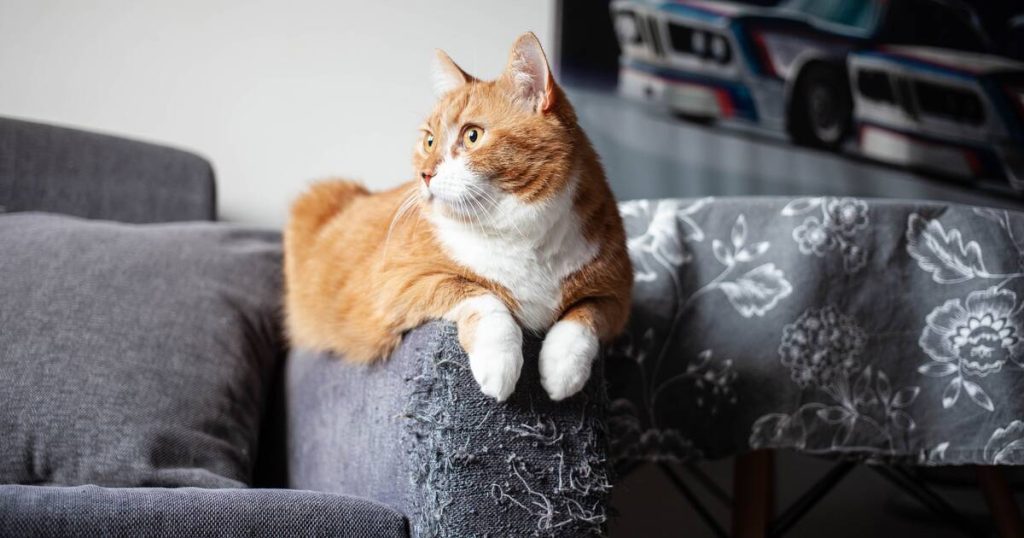Why Do Cats Like to Scratch Sofas? Effective Ways to Stop It
If you’re a cat owner, you’ve probably faced the frustrating sight of your beloved sofa being shredded by your feline friend. Why do cats love to scratch sofas, and more importantly, how can you stop this behavior effectively? In this comprehensive guide, we’ll explore the reasons behind this common habit and share practical solutions that will help you preserve both your furniture and your relationship with your cat.
1. Why Do Cats Scratch Sofas?
Understanding the motivation behind scratching is key to addressing the problem effectively. Here are the most common reasons why cats scratch your sofa:
1.1. Marking Territory
Cats have scent glands in their paws. When they scratch a surface, they are not just leaving visual marks; they are also depositing their scent. This behavior is a way of marking territory and making the space feel familiar and secure.
1.2. Maintaining Claw Health
Scratching helps cats remove the outer sheath of their claws, keeping them sharp and healthy. It’s a natural grooming behavior that all cats need to perform regularly.
1.3. Stretching and Exercise
Scratching allows cats to stretch their bodies and flex their feet and claws. It’s an instinctive way for them to stay fit and limber, especially after a nap.
1.4. Stress Relief
Scratching can also serve as a stress-relief mechanism. Cats may scratch more frequently if they feel anxious, bored, or overstimulated.
1.5. Attention-Seeking Behavior
Some cats learn that scratching the sofa gets a reaction from their owners. Whether it’s positive attention or scolding, the interaction can reinforce the behavior.
2. Why the Sofa?

Now you might wonder: why does it have to be the sofa, and not the scratching post or another surface?
2.1. Prominent Location
Sofas are often placed in the main living area, where the family gathers. Scratching in this prominent location allows the cat to maximize the territorial message to both humans and other pets.
2.2. Appealing Texture
The fabric of most sofas is particularly satisfying for cats to scratch. Materials like linen, velvet, tweed, or leather provide the perfect resistance and feel that cats crave.
2.3. Habitual Behavior
Once a cat starts scratching a particular area, it often becomes a habit. The more they scratch the sofa, the more the scent and visual markers reinforce the behavior, making it more difficult to break.
3. How to Stop Your Cat from Scratching the Sofa Effectively
Now that you know why cats scratch sofas, let’s dive into effective ways to stop it.
3.1. Provide Alternative Scratching Options
The most humane and effective approach is to give your cat appropriate alternatives.
-
Scratching posts: Choose tall, sturdy scratching posts made of sisal rope, carpet, or cardboard.
-
Scratching pads: Place horizontal or inclined pads for variety.
-
Location matters: Place scratching posts near the sofa initially, then gradually move them to a more convenient location.
Tips:
-
Rub catnip or silvervine on the scratching post to attract your cat.
-
Reward your cat with treats and praise when they use the post.
3.2. Make the Sofa Unappealing
At the same time, you need to make the sofa less attractive for scratching.
-
Use double-sided sticky tape on commonly scratched areas.
-
Cover the sofa with a temporary slipcover or plastic sheet to deter scratching.
-
Use scent deterrent sprays (commercial or homemade) with scents cats dislike, such as citrus or lavender.
3.3. Trim Your Cat’s Claws Regularly
Keeping your cat’s claws trimmed will:
-
Reduce the damage caused by scratching.
-
Make scratching feel less satisfying, helping to discourage the behavior.
How to trim safely:
-
Use cat-specific nail clippers.
-
Start slowly and get your cat used to the process.
-
Only trim the sharp tip, avoiding the pink quick.
3.4. Use Soft Claw Caps
Soft plastic caps (such as Soft Paws) can be glued onto your cat’s claws.
-
They prevent damage while allowing normal scratching behavior.
-
They typically last 4–6 weeks.
-
Consult your veterinarian before using them.
3.5. Address Stress and Boredom
Since stress and boredom can increase scratching:
-
Provide interactive toys to keep your cat engaged.
-
Ensure daily play sessions to burn off energy.
-
Create a stimulating environment with perches, tunnels, and window views.
-
Use calming products like Feliway diffusers to reduce anxiety.
3.6. Avoid Punishment
Never punish your cat physically or yell when they scratch the sofa. This will only cause fear and stress, which may worsen the problem.
Instead:
-
Redirect the behavior gently by moving your cat to the scratching post.
-
Reward them when they use appropriate surfaces.
3.7. Be Consistent and Patient
Changing your cat’s behavior takes time and consistency. You need to:
-
Be patient.
-
Provide alternatives.
-
Make the sofa unappealing.
-
Reinforce positive behavior.
Over time, most cats will learn to prefer the designated scratching areas.
4. Common Mistakes to Avoid
4.1. Declawing
Declawing is a painful, inhumane procedure that amputates part of a cat’s toes. It can cause:
-
Chronic pain.
-
Behavioral issues.
-
Balance problems.
Never declaw your cat. There are always humane alternatives.
4.2. Inadequate Scratching Posts
A flimsy or too-small scratching post won’t satisfy your cat. Make sure the post is:
-
Tall enough for full-body stretching (at least 32 inches).
-
Stable and doesn’t wobble.
-
Made from materials cats love, like sisal rope.
4.3. Ignoring the Underlying Cause
If your cat suddenly starts scratching excessively or in new areas, consider potential causes:
-
Stress due to changes in the household.
-
Medical issues causing discomfort.
-
Boredom or lack of stimulation.
Addressing the root cause is essential for long-term success.
5. FAQs About Cats Scratching Sofas

5.1. Will my cat ever stop scratching completely?
No — scratching is a natural and necessary behavior. Your goal is not to stop scratching entirely but to redirect it to appropriate surfaces.
5.2. How long does it take to train a cat to stop scratching the sofa?
It depends on the cat and your consistency, but most cats respond well within a few weeks if you provide suitable alternatives and make the sofa unappealing.
5.3. What type of scratching post do cats prefer?
Most cats prefer posts made of sisal rope or cardboard over carpet. Tall vertical posts and horizontal pads both appeal to different cats. Providing variety is the best strategy.
5.4. Are certain cat breeds more likely to scratch furniture?
While all cats scratch, high-energy breeds like Bengals, Abyssinians, and Siamese may scratch more frequently. These breeds especially benefit from an enriched environment.
6. Conclusion
Cats scratch sofas for many instinctive reasons: marking territory, maintaining claw health, stretching, stress relief, and attention-seeking. Instead of trying to stop this natural behavior, the key is to redirect it to acceptable alternatives.
By understanding your cat’s needs and providing:
-
High-quality scratching posts.
-
Environmental enrichment.
-
Regular claw trimming.
-
A stress-free home.
You can effectively protect your sofa and maintain a happy relationship with your cat.
Remember, patience and consistency are your best allies in this process. With the right approach, your cat can learn to love scratching their new post instead of your treasured sofa.

